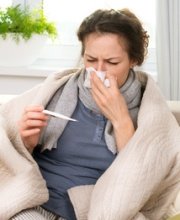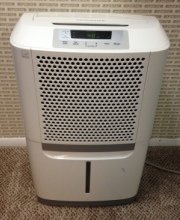Find a Mold Specialist Now
Click or Call, Toll-Free 24/7
Indoor Air Quality
Indoor air quality is an important topic to be mindful of. Since Americans spend 90 percent of their time indoors, and since indoor air can be two to five times – and up to 100 times – more polluted than outdoor air, it’s important to understand what may be lurking in that air. Along with understanding mold sources and symptoms from exposure to it, it’s equally important to understand the impact of other household air contaminants and toxins.
Contaminants that impact indoor air quality and health

Mold is a complicated organism and it can impact your health. Although the effects of mold on health are widely discussed, disputed and publicized, a lack of funding and no standardized health metrics have made it difficult to establish the real degree to which this contaminant can trigger or exacerbate various conditions.
The presence of mold has been linked to a number of symptoms including:
- Nasal congestion, runny nose and sneezing
- Eye irritation or blurred vision
- Sore throat and/or chronic cough
- Skin rash
- Headaches
- Fatigue
For highly sensitive individuals or those with compromised immune systems, these reactions can often be severe. More serious reactions to mold exposure include triggering of asthma attacks, pneumocystitis pneumonia and aspergillosis.
Many homeowners do not consider that mold can be impacting their health unless they see it or smell it. But if you can see or smell mold, you definitely have a problem! It’s the airborne mold spores that you can’t see or smell from hidden sources (dampness in carpets, leaky pipes behind walls, etc.) that can affect the respiratory system.
For allergic or sensitive individuals, the presence of mold can be a trigger for serious, chronic health problems, so it’s good idea to test for airborne mold to find out if it could be the culprit.
Here is more on dealing with mold in the home.
Lead can be found in both air and drinking water. If lead is present in your home, it can linger for decades and even after remediation. Lead can affect nearly every organ and system in your body. Children that are six years old or younger are most vulnerable to the effects of lead due to lower lung volumes and their developing brains and nervous systems.
Lead can accumulate over time, being stored in the bones. Unfortunately, the effects of lead poisoning cannot be reversed, with even low lead levels in the blood resulting in:
- Behavior and learning issues
- Lower IQ
- Slowed growth
- Fine-motor skill problems
- Poor memory
- Hearing problems
- Anemia
- Seizures, coma and death (in rare cases)
Adults are not immune to the effects of lead, and exposure can lead to cardiovascular effects, high blood pressure, decreased kidney function and reproductive problems in both men and women.
The long-term effects of lead can be especially harmful for pregnant or nursing women. Lead can be released as maternal calcium, which helps form the bones of the fetus or it can even cross the placental barrier during pregnancy resulting in reduced growth of the fetus. It can also be transmitted through breast milk.
Asbestos is a naturally occurring mineral fiber found in rock and soil that was used as a popular fire retardant in building materials and textiles for decades. Although regulations have been passed by organizations including the Environmental Protection Agency (EPA), Occupational Safety and Health Administration (OSHA) and the Consumer Product Safety Commission (CPSC), many products still contain asbestos. Plus, it is unclear how much asbestos may be contained in imported goods, with evidence suggesting that it is still being used in the car manufacturing, mining, and building and construction industries.
Asbestos is definitively linked as a cause of four types of cancer: mesothelioma, lung cancer, laryngeal cancer and ovarian cancer. If your home contains asbestos products, their fibers may be released into the air when disturbed or damaged during home maintenance, repairs or renovation. Testing for asbestos before and after renovations is highly advisable to protect your indoor air quality.
Radon is an invisible, odorless gas that comes from the natural breakdown of uranium in soil, rock and water. Radon is found in all states and can get into your home through your foundation. As the second leading cause of lung cancer, radon is responsible for approximately 21,000 deaths annually. About 2,900 of these deaths happen to people that have never smoked, making radon the number one cause of lung cancer among non-smokers.
To minimize risk, annual testing is recommended because radon levels can change due to the earth beneath your home settling, seasonal changes, a renovation that impacts ventilation, or a natural disaster. If you do have elevated radon levels in your home, a mitigation system can be installed affordably by a qualified professional to reduce levels by up to 99%.
Volatile organic compounds or VOCs are emitted as gases from thousands of products. VOC concentrations can be up to 10 times higher indoors than outdoors. Sources of VOCs include paints, air fresheners, moth balls, varnishes, waxes, personal care products like perfumes and cosmetics, hair spray, cleansers, hobby/craft supplies (like permanent markers and glues), pesticides and stored fuels, along with office equipment and building furnishings.
Key signs or symptoms associated with exposure to VOCs include:
- Eye, nose and throat irritation
- Headaches, dizziness, loss of balance and nausea
- Damage to the kidneys, liver and central nervous system
- Cancer
Formaldehyde is a colorless gas that can be emitted from curtains, bedding, building materials, plywood, particleboard, insulation, glues, fabrics, paints, lacquers and gas stoves or kerosene space heaters.
Formaldehyde exposure can cause breathing difficulties, as well as irritation of the skin, eyes, nose, and throat. High levels of exposure may cause cancer.

indoor air quality Testing
Indoor air quality is composed of mold along with several other contaminants and toxins and all of them can adversely impact health. To determine what may be lurking in your living space, you should have your home tested for multiple contaminants. There are two options for testing home indoor air quality: self-testing or hiring a professional.
Self-testing kits offer consumers an easy way to test indoor environments, quickly and easily. These air testing kits include intuitive sampling systems that can assess for a wide array of contaminants in just minutes. Self-testing may be less expensive than hiring a professional, but you will likely need to take all of your samples and ship them to a lab. Improper sampling can skew the results.
Local professionals can also be hired to perform onsite environmental testing. You can use this link to get a list of local testing professionals. These experts can guide homeowners through their results and advise on any air quality issues uncovered, many of which can be addressed easily and affordably.
Return From Indoor Air Quaility To Our Main Mold Health Issues Page
About The Author:
Wendy Formichelli is with Live Pure, a manufacturer of do-it-yourself environmental testing products for home and office.
Ref:
AIHA
Privacy Policy Terms and Conditions Accessibility Do Not Sell My Information Disclaimer Contact Us




